The CharDham Yatra Places is one of the most revered Hindu pilgrimages in India, nestled in the majestic landscapes of Uttarakhand. This sacred journey covers four holy shrines Yamunotri, Gangotri, Kedarnath, and Badrinath each holding immense religious and mythological importance.
Each Dham marks the origin of a sacred river:
- Yamunotri – Source of the River Yamuna
- Gangotri – Source of the River Ganga
- Kedarnath – Near the source of the Mandakini River
- Badrinath – On the banks of the Alaknanda River
These destinations are more than just temples they represent a spiritual path to moksha (liberation), believed to cleanse the soul of all sins and past karma.
The traditional route starts from Yamunotri, then proceeds to Gangotri, followed by Kedarnath, and finally ends at Badrinath. This sequence is not just geographical, but also symbolic of spiritual progression from purity to ultimate salvation.
Pilgrims are treated not only to age-old rituals and mythological tales, but also to breathtaking Himalayan scenery, making it a perfect blend of devotion and nature.
Every year, millions of devotees embark on this divine journey, reinforcing Uttarakhand’s reputation as the spiritual heart of India.
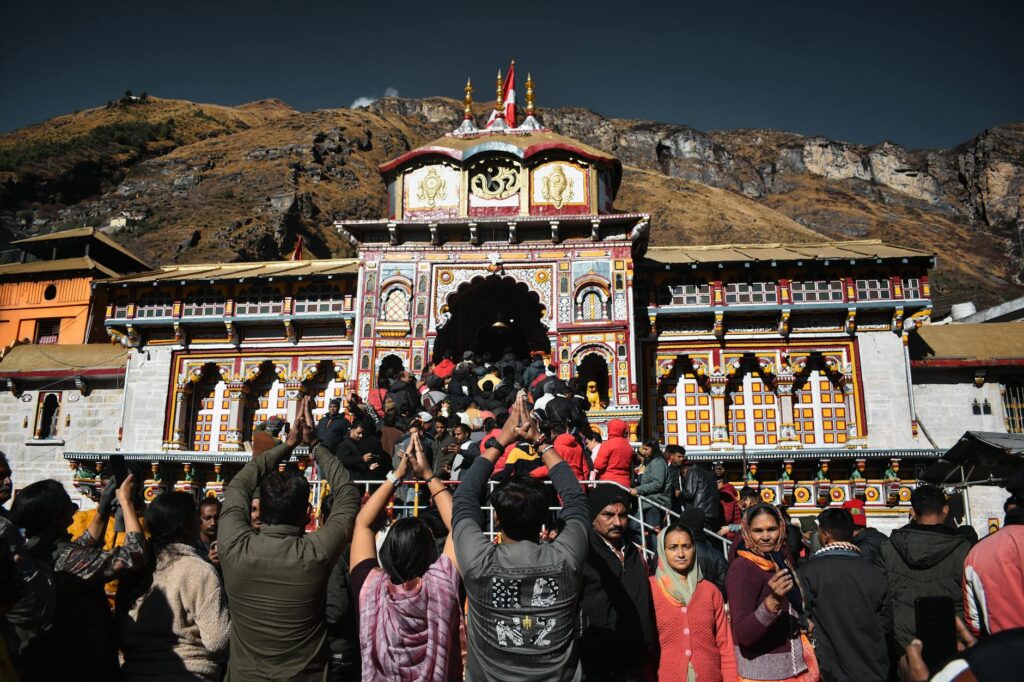
Introduction To CharDham
Every year, thousands of pilgrims undertake the Char Dham Yatra, a deeply spiritual expedition through the awe-inspiring landscapes of Uttarakhand. This ancient Hindu pilgrimage connects four sacred shrines Yamunotri, Gangotri, Kedarnath, and Badrinath each steeped in myth, devotion, and divine energy. With every step, devotees seek not only blessings and inner transformation but also freedom from the cycle of rebirth. Beyond its spiritual significance, the Char Dham Yatra is a profound journey through India’s cultural soul and the breathtaking beauty of the Himalayas
Char Dham Yatra: Overview & Significance
The Char Dham Yatra, often referred to as the Chota Char Dham of Uttarakhand, is a cornerstone of Hindu spiritual journeys in North India. Nestled in the lap of the majestic Himalayas, the four sacred shrines Yamunotri, Gangotri, Kedarnath, and Badrinath represent unwavering devotion and timeless tradition.
For devout Hindus, undertaking this pilgrimage is more than a ritual it’s a soul-cleansing experience believed to pave the way toward moksha (liberation). Visiting all four sites is considered a spiritual milestone, blending inner awakening with the awe-inspiring beauty of the Himalayas.

The Spiritual Essence of the Char Dham Yatra
Embarking on the Char Dham Yatra is regarded as one of the most profound spiritual experiences in Hinduism. Each of the four sacred sites reflects a fundamental element of the faith: Yamunotri and Gangotri celebrate the origins of the revered rivers Yamuna and Ganga, while Kedarnath and Badrinath are sanctified to Lord Shiva and Lord Vishnu, symbolizing divine balance.
Traditionally, the pilgrimage unfolds from west to east beginning at Yamunotri, then moving to Gangotri, followed by Kedarnath, and culminating at Badrinath. This sequence honors ancient customs, allowing pilgrims to collect sanctified river water as offerings for the deities, especially at Kedarnath.
At every stop along this sacred circuit, devotees engage in time-honored practices taking ritual baths in holy rivers, offering prayers, and participating in sacred ceremonies. More than just a physical expedition, the Char Dham Yatra is a deep spiritual journey rooted in devotion, legacy, and centuries of unwavering faith.

Historical & Mythological Roots of the Char Dham Shrines
The origins of the Char Dham Yatra trace back to ancient India, rich in spiritual lore and deeply rooted in Hindu belief. This revered pilgrimage was systematized by Adi Shankaracharya, a prominent spiritual figure from the 8th century, who envisioned these sites as pillars to reinforce dharma and unify diverse traditions within Hinduism.
Each dham carries its own divine legacy, passed down through generations. Yamunotri is revered as the dwelling place of Goddess Yamuna, who is believed to protect her devotees from premature death and misfortune. Her story reflects the eternal bond with her brother Yama, the deity of death, casting her as a compassionate divine force.
In Gangotri, the sacred narrative centers on the celestial river Ganga descending to Earth to purify the souls of humanity. This descent was made possible by King Bhagirath’s intense meditation, and Lord Shiva’s act of capturing the powerful river in his locks to prevent destruction.
Kedarnath, nestled among the Garhwal Himalayas, honors Lord Shiva in his fierce and forgiving form. According to legend, the Pandavas sought forgiveness here after the Mahabharata war. Shiva, evading them, took the form of a bull and vanished into the mountains his hump manifesting at Kedarnath.
Badrinath, on the other hand, is associated with Lord Vishnu, who is said to have meditated here in complete stillness amidst the harsh terrain. His consort, Goddess Lakshmi, shielded him from the cold in the form of a Badri tree, giving the town its name and eternal sanctity.
These legends are not merely stories they are living traditions, deeply embedded in the rituals, chants, and spirit of every pilgrim who undertakes this timeless Himalayan journey.
Kedarnath Dham – The Sacred Seat of Lord Shiva
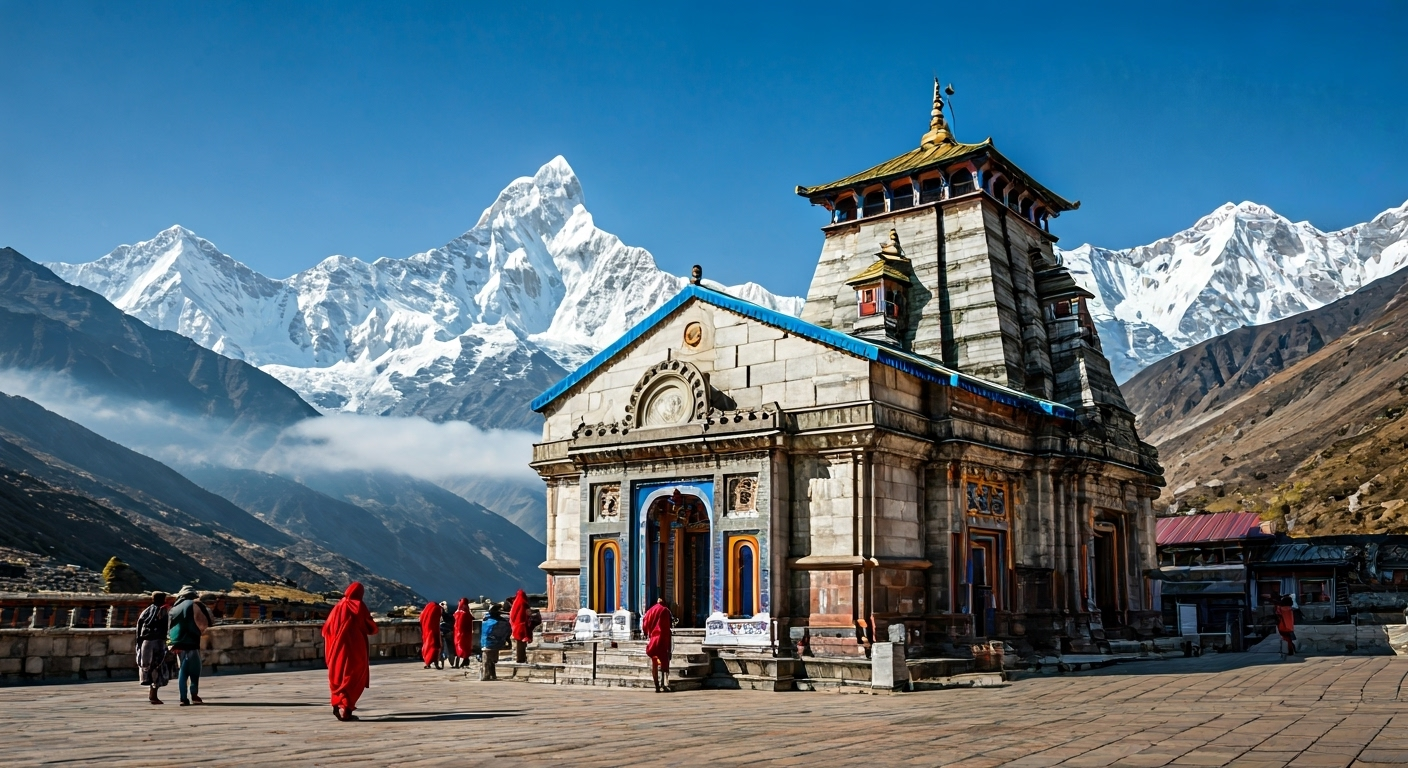
Perched high in the Garhwal Himalayas, Kedarnath Dham holds a place of deep reverence in the hearts of Shiva devotees. Set beside the pristine Mandakini River, this ancient temple is not only part of the Char Dham circuit but also recognized as one of the twelve Jyotirlingas the most powerful manifestations of Lord Shiva.
Surrounded by snow-capped peaks and dramatic landscapes, the temple’s remote location makes the journey a true test of faith. Pilgrims undertake a steep and strenuous trek, not just for the destination, but for the spiritual awakening that comes with every step toward this timeless sanctuary of peace and devotion.
Key Attractions & Spiritual Landmarks in Kedarnath
While the Kedarnath Temple stands as the focal point of devotion, the surrounding region is a treasure trove of sacred sites and serene natural beauty that elevate the spiritual journey.
The ancient stone temple, dedicated to Lord Shiva, rises powerfully against the backdrop of the mighty Himalayas. Its remote location and mystical ambiance make it not just a religious destination, but a once-in-a-lifetime pilgrimage experience. Flowing nearby, the Mandakini River adds to the sanctity of the landscape, with its icy waters considered deeply purifying by devotees.
Must-Visit Spots Around Kedarnath:
Gaurikund – The traditional base of the Kedarnath trek, Gaurikund is steeped in legend and devotion. It is believed that Goddess Parvati meditated here to win Lord Shiva’s love. Pilgrims also take ritual baths in its hot springs before ascending.
Gandhi Sarovar – Also known as Chorabari Tal, this calm glacial lake is ideal for peaceful reflection. Surrounded by quiet and snow-kissed cliffs, it’s a place to pause and absorb the silence of the Himalayas.
Shankaracharya Samadhi – Located just behind the temple, this sacred site marks the final resting place of Adi Shankaracharya, the saint who revived Hinduism and established the Char Dham circuit. It’s a powerful reminder of the spiritual legacy rooted here.

Kedarnath: Legends, Rituals & The Ideal Time to Visit
Kedarnath is more than a pilgrimage it’s a living legend carved into the heart of the Himalayas. Mythology tells us that the Pandavas, burdened by guilt after the great war of Mahabharata, came to seek Lord Shiva’s forgiveness. Evading them, Shiva is said to have taken the form of a bull and vanished into the ground his hump appearing in Kedarnath, where the temple now stands. The site later gained spiritual prominence when Adi Shankaracharya chose it as a place of enlightenment and attained samadhi nearby.
Sacred Rituals at Kedarnath
Devotees visiting the temple engage in age-old practices that reflect deep devotion and spiritual purity:
- Abhishekam: Ritual bathing of the sacred Jyotirlinga using water from the Mandakini River, milk, honey, and ghee a symbolic act of cleansing one’s sins.
- Evening Aarti & Special Pujas: During festivals and peak pilgrimage days, the temple comes alive with chants, lamps, and divine energy as priests perform grand aarti ceremonies.
- Personal Offerings: Many pilgrims bring sacred items or prayers written on paper to leave at the temple, seeking divine blessings for their families.
Time to Visit Kedarnath
The temple remains open from May to October, making these months the most ideal for your journey. The snow melts during this time, and the paths to the shrine are accessible. The weather is relatively pleasant, allowing devotees to trek comfortably. July to August may see monsoon rains, so May–June and September–October are often preferred.
During the open season, Kedarnath buzzes with spiritual energy, as thousands gather in devotion under the watchful gaze of the Himalayas.
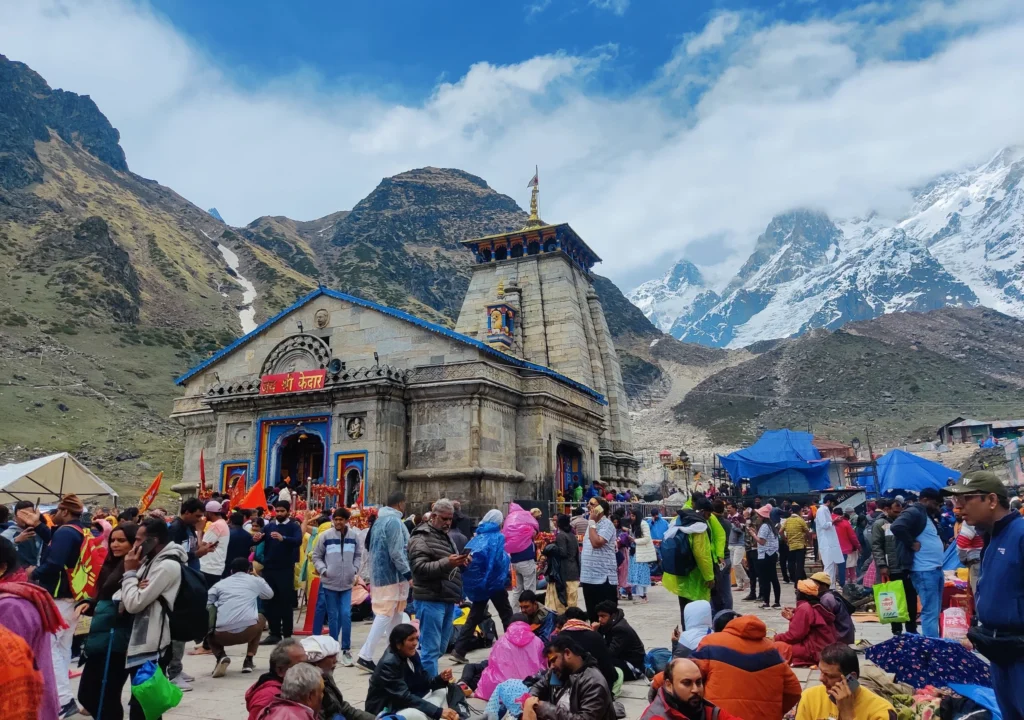
Badrinath Dham – Divine Abode of Lord Vishnu
Tucked away in the Chamoli district of Uttarakhand, Badrinath Dham is a revered pilgrimage site nestled between the Nar and Narayan mountain ranges. This sacred temple is dedicated to Lord Vishnu, who is believed to have performed deep penance here, enveloped in silence and snow.
As one of the four holiest destinations in the Char Dham Yatra, the Badrinath Temple captivates with its vibrant architecture and spiritual magnetism. Every year, thousands of devotees flock to this Himalayan sanctuary, seeking divine grace, inner peace, and a glimpse into India’s mythological legacy.
Noteworthy Places to Explore in Badrinath
Beyond the revered Badrinath Temple, this sacred town is home to a variety of spiritually significant spots that enrich the pilgrim’s experience and bring ancient legends to life.
At the heart of it all is the Badrinath Temple, where prayers echo through the Himalayas and devotees line up to witness the divine presence of Lord Vishnu. Just beneath the temple lies the Tapt Kund, a steaming natural hot spring where visitors cleanse themselves before entering the sanctum believed to be both physically and spiritually purifying.
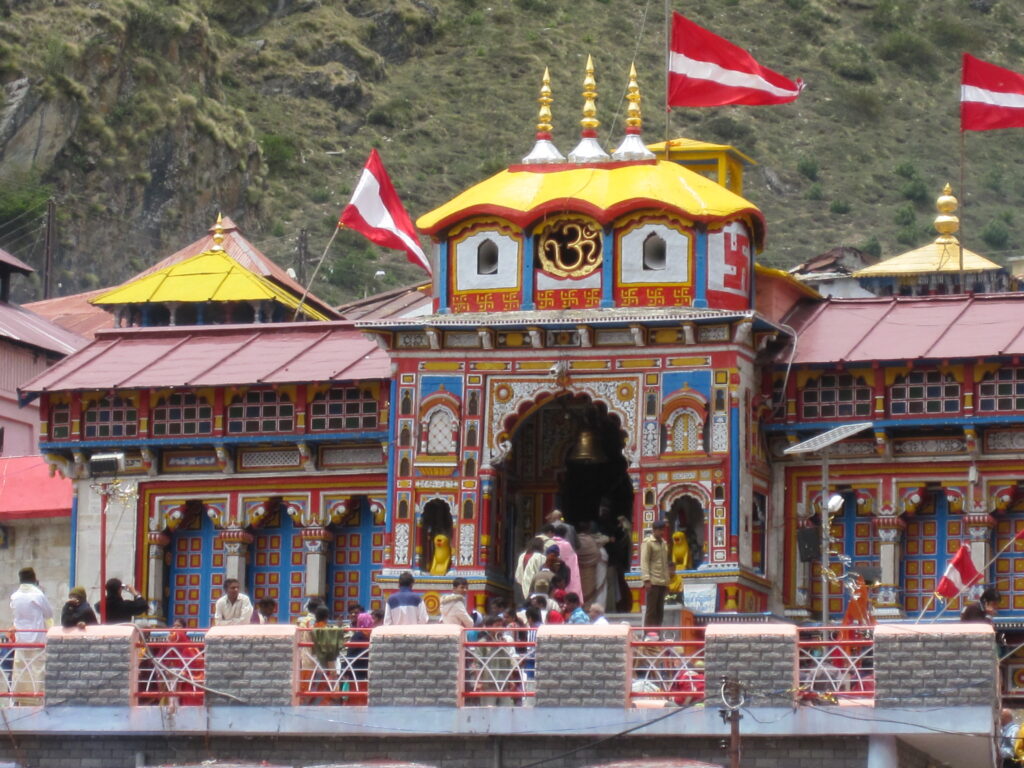
Other Notable Places Around Badrinath:
- Brahma Kapal – A revered ghat on the banks of the Alaknanda River, believed to be the only place where one can offer rituals (pind daan) for the permanent salvation of ancestors.
- Mana Village – India’s last inhabited village near the Indo-Tibet border, this ancient settlement is steeped in mythology. Sites like Vyas Gufa and Bhima Pul connect directly to tales from the Mahabharata.
- Neelkanth Peak – Towering behind the temple, this snow-covered summit is often called the “Garhwal Queen” and is considered the guardian of Badrinath. It provides a spectacular view during sunrise, creating a breathtaking spiritual moment.
Together, these places make Badrinath not just a destination, but a complete spiritual and cultural experience.
Traditions, Festivals & Unique Customs of Badrinath
The spiritual rhythm of Badrinath Dham is not only preserved in its architecture and legends but also in the vibrant customs and seasonal festivals that bring this Himalayan shrine to life.
Due to extreme winter conditions, the temple observes an annual ritual of closure in November and reopening around Akshaya Tritiya (May). During this time, the idol of Lord Vishnu is ceremonially shifted to Joshimath, where prayers continue uninterrupted.
Major Festivals at Badrinath:
- Mata Murti Ka Mela – Held in honor of Mata Murti, the mother of Lord Vishnu in his Badri form. The town witnesses processions, chants, and colorful local participation.
- Badri-Kedar Festival – Celebrated jointly in Kedarnath and Badrinath, this cultural event blends devotional music, dance, and traditional performances, drawing pilgrims and tourists alike.
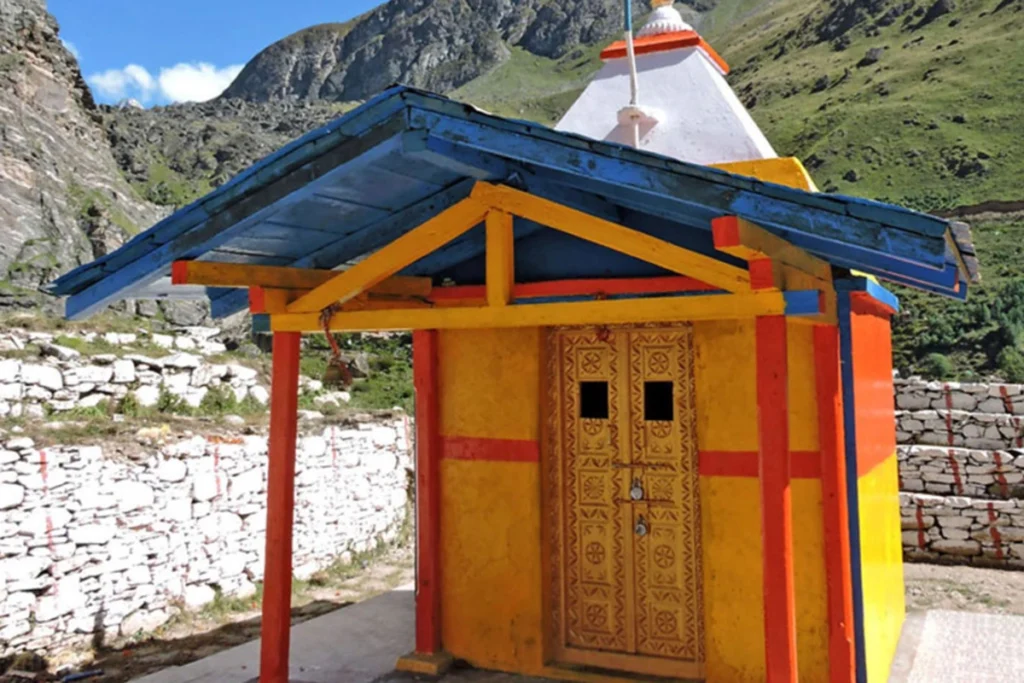
Sacred Practices & Local Rituals:
- Tapt Kund Bathing – A vital pre-temple ritual believed to cleanse both body and soul.
- Pind Daan at Brahma Kapal – Families gather here to perform ancestral rites, hoping to liberate departed souls from the cycle of rebirth.
These age-old customs, passed down through generations, offer every visitor a chance to connect deeply with the spiritual roots of Uttarakhand and participate in a living heritage that continues to thrive amidst the mountains. these rituals connects visitors to centuries-old traditions and the deep spiritual fabric of Uttarakhand.
Yamunotri Dham – The Origin of River Yamuna
Yamunotri Dham marks the beginning of the Chardham Yatra and is the source of the river Yamuna. Nestled in Uttarakhand, this westernmost shrine is set amid rugged mountains and lush valleys.
The main attraction is the Yamunotri Temple, dedicated to Goddess Yamuna, where pilgrims seek blessings for protection from untimely death. Begin your sacred journey here, immersed in an atmosphere of devotion and natural beauty.
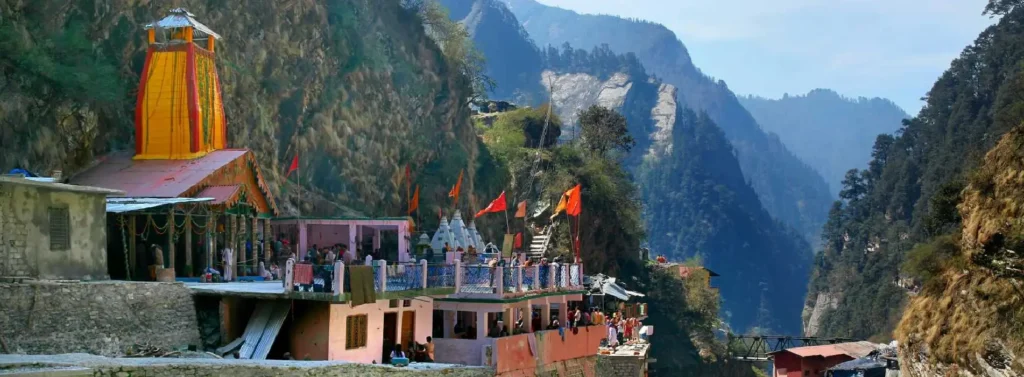
Nearby attractions and accommodations in Yamunotri Dham
When you arrive at Yamunotri Dham, the journey is as rewarding as the destination. The nearby village of Janki Chatti is a popular base for pilgrims, offering a range of accommodations from budget lodges to comfortable resorts.
If you’re considering a tour package, many include essential items like trekking assistance, guides, and spiritual talks. This ensures a safe and enriching pilgrimage, especially for first-timers.
Other noteworthy attractions around Yamunotri:
- Hanuman Chatti: A scenic spot and convenient halt for trekkers heading towards the temple.
- Saptarishi Kund: A glacial lake that’s ideal for those seeking a peaceful retreat.
Staying close to nature and tradition, you’ll find hospitality and facilities to suit every need.
Trekking and other activities in Yamunotri Dham
Trekking is a highlight of the Yamunotri pilgrimage. The main trail begins at Janki Chatti and covers roughly 6 kilometres, winding through forests and mountain vistas. This trek is accessible to most fitness levels and offers a meditative experience in itself.
Along the route, you’ll encounter:
- Surya Kund: A hot water spring where devotees cook prasad (offerings) for the goddess.
- Divya Shila: A revered rock pillar, worshipped before entering the temple.
Besides trekking, you can enjoy birdwatching, photography, and nature walks, making this dham ideal for those who seek adventure alongside spiritual fulfilment.
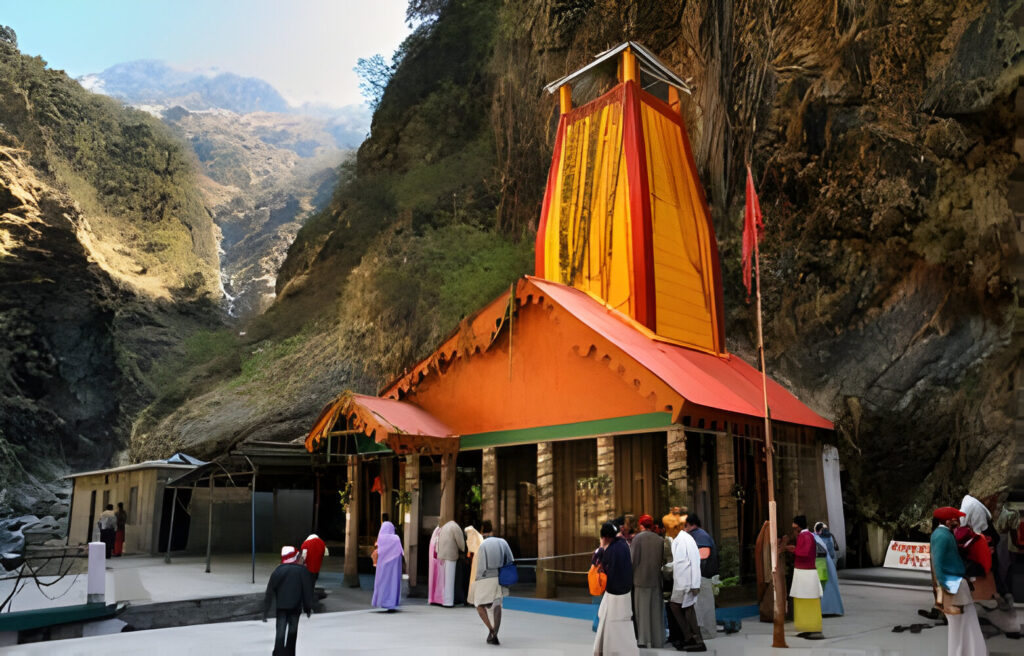
History and significance of Yamunotri Dham
The history of Yamunotri Dham is deeply tied to Goddess Yamuna, believed to be the daughter of the sun god, Surya, and sister to Yama, the god of death. Devotees believe a visit here cleanses the soul and protects against untimely demise.
The temple, originally built by Maharaja Pratap Shah of Tehri Garhwal, sits near the river’s icy origin. The adjacent Surya Kund hot spring is named after the sun god and is used for ritual offerings.
Legends say that “Yamunotri is a place where the agony of death is alleviated by the blessings of Goddess Yamuna,” as noted by historian Amar Singh Thapa. The dham’s spiritual significance draws pilgrims seeking divine intervention and peace.
Temple and holy sites to visit at Yamunotri Dham
Yamunotri Temple stands as the primary attraction, its serene setting making it a sought-after pilgrimage site. Before entering, devotees stop at Divya Shila, a rock pillar believed to be blessed with divine power.
Inside the temple, rituals are performed for Goddess Yamuna and offerings are made with water from the hot Surya Kund, symbolising purification.
Other must-visit holy sites in this area include:
- Saptarishi Kund: A glacial lake traditionally associated with the seven sages of Hindu mythology.
- Hanuman Chatti: A confluence of rivers and a spiritual stop before Yamunotri.
These sites collectively make Yamunotri a hub of devotion and natural wonder.

Nearby attractions and scenic spots near Yamunotri Dham
If you wish to explore further, Yamunotri Dham offers plenty of scenic and spiritual spots. Janki Chatti, as the key starting point for the trek, boasts picturesque surroundings and natural hot springs.
Other nearby attractions to add to your journey:
- Valley of Flowers: Famous for its vibrant alpine flora, a UNESCO World Heritage Site.
- Kharsali Village: Known for its ancient Shani Dev temple and serene landscapes.
For those who appreciate both adventure and spirituality, these locations add extra dimensions to your pilgrimage, giving you a complete Garhwal Himalayas experience.
Gangotri Dham – The Source of River Ganges
Gangotri Dham, nestled in the Garhwal Himalayas, is revered as the origin point of the sacred river Ganges. The main attraction is the Gangotri Temple, dedicated to Goddess Ganga, where pilgrims seek spiritual purity and absolution.
Set amidst snow-clad peaks and pristine forests, Gangotri Dham radiates both serenity and grandeur. Its tranquil surroundings, coupled with powerful mythology, make it an essential part of every Chardham Yatra.

Visiting the Gangotri temple and nearby attractions
A trip to Gangotri is incomplete without visiting its iconic temple, where Goddess Ganga is worshipped in an atmosphere of reverence and tranquillity. The temple’s white granite structure stands out in the landscape, evoking a sense of purity.
Near Gangotri, you’ll find several worthwhile attractions:
- Brahma Kapal: A holy site for ancestral rites and rituals.
- Harsil: A quiet hamlet known for its apple orchards and scenic beauty.
- Gangnani: Renowned for its hot water springs and peaceful surroundings.
Tour packages often cover these nearby spots, ensuring a well-rounded pilgrimage filled with both spirituality and natural splendour.
The trek to Gaumukh, the mouth of the Gangotri glacier
The trek to Gaumukh is a highlight for adventure seekers and spiritual aspirants alike. Gaumukh, the source of the Gangotri glacier, is believed to be the very mouth from which the river Ganga emerges.
This demanding trek covers approximately 18 kilometres from Gangotri, passing through breathtaking landscapes. Along the way, you can explore:
- Bhojbasa: A resting point with basic accommodations and mountain views.
- Tapovan: A high-altitude meadow ideal for meditation and yoga.
For trekkers, the journey to Gaumukh is not just a physical challenge but a chance to connect with the spiritual energy of the Himalayas.
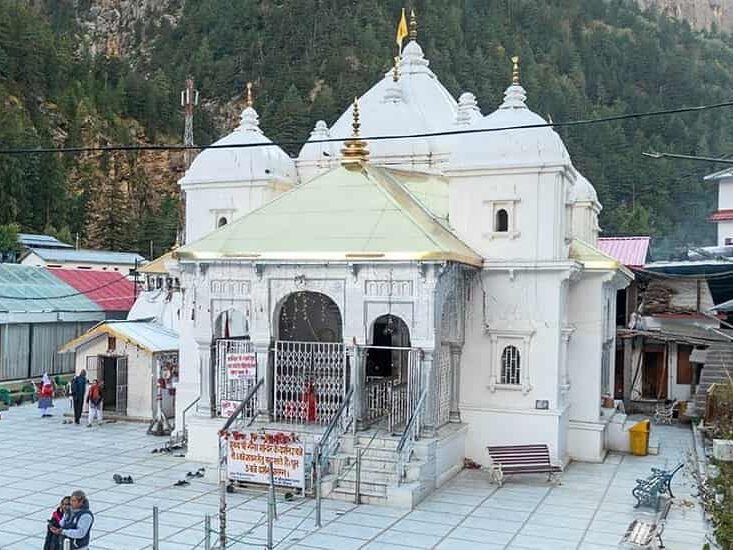
The significance of Gangotri Dham in Hindu mythology
In Hindu mythology, Gangotri Dham is where Goddess Ganga descended to earth, answering the prayers of King Bhagirath who sought to purify his ancestors. The force of her descent was so great that Lord Shiva caught her in his locks, releasing her gently to earth.
This story is pivotal in Hindu belief, with Gangotri symbolising sacrifice, purification, and divine grace. Pilgrims believe that bathing in the icy waters washes away sins and bestows spiritual merit.
The temple rituals and festivals, especially during Akshaya Tritiya and Ganga Dussehra, reflect these ancient tales and bring the mythology to life for visitors.
How to reach Gangotri Dham and where to stay
Gangotri Dham is accessible via a well-connected road network from major cities like Haridwar, Rishikesh, and Dehradun. The last motorable point is Gangotri town, from which the temple is a short walk.
Accommodations range from budget guesthouses to comfortable hotels, catering to every travel style. Char dham tours often include stays at nearby places, ensuring rest and convenience.
| Starting Point | Route Description | Accommodation Options |
|---|---|---|
| Haridwar/Rishikesh | Drive via Uttarkashi, Harsil to Gangotri (290 km) | GMVN guesthouses, local hotels |
| Dehradun | Via Dharasu, Uttarkashi (240 km) | Budget and deluxe hotels in Harsil |
| Uttarkashi | Direct drive (100 km) | Guest houses, spiritual retreats |
Plan your journey well and book accommodations in advance for a smooth pilgrimage experience.
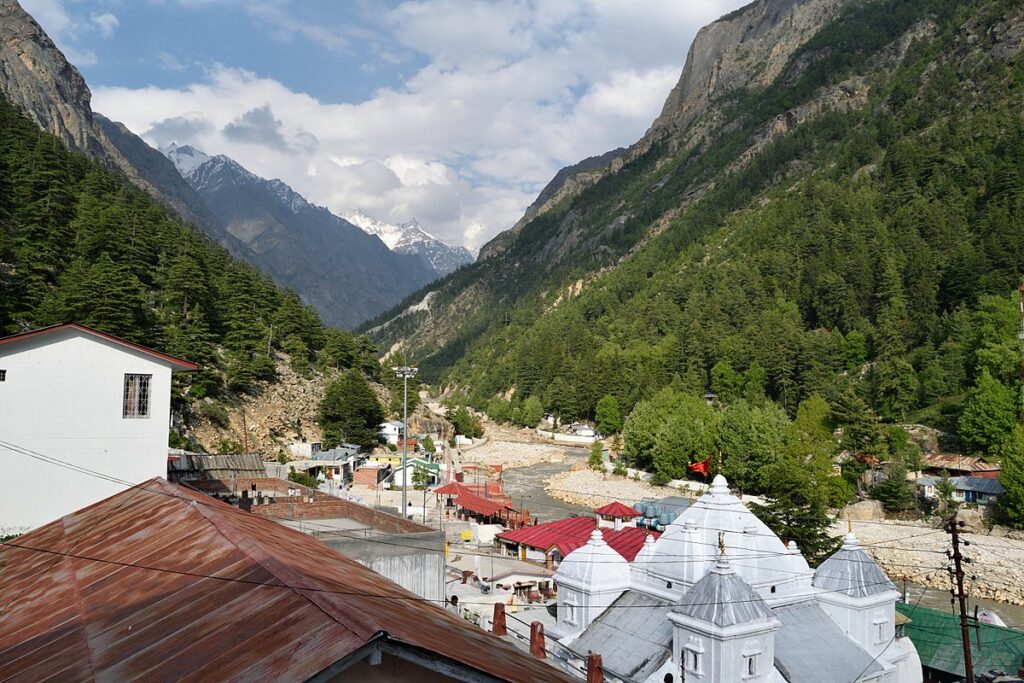
Frequently Asked Questions
How many days are needed to visit all the Chardham Yatra places?
A complete Chardham Yatra typically takes 10-12 days by road, covering each char dham and allowing time for rituals and rest. Tour packages offer flexible schedules, but planning during the best time May to October ensures you experience the full spiritual richness of this Hindu pilgrimage.
What is the recommended order to cover the Chardham circuit?
The sacred Chota Char Dham circuit is best explored in this order: Yamunotri, Gangotri, Kedarnath, and Badrinath. This char dham pilgrimage route traversing west to east across Dev Bhoomi follows ancient tradition and logistical convenience, ensuring a seamless and spiritually meaningful journey.
Are there nearby places to explore at each Chardham destination?
Absolutely, each Chardham Yatra stop features nearby attractions scenic valleys, sacred shrines, and towns in the Garhwal Himalayas. Popular options include the Valley of Flowers near Badrinath, Harsil by Gangotri, and the historic village of Janki Chatti close to Yamunotri, enriching your pilgrimage experience.


